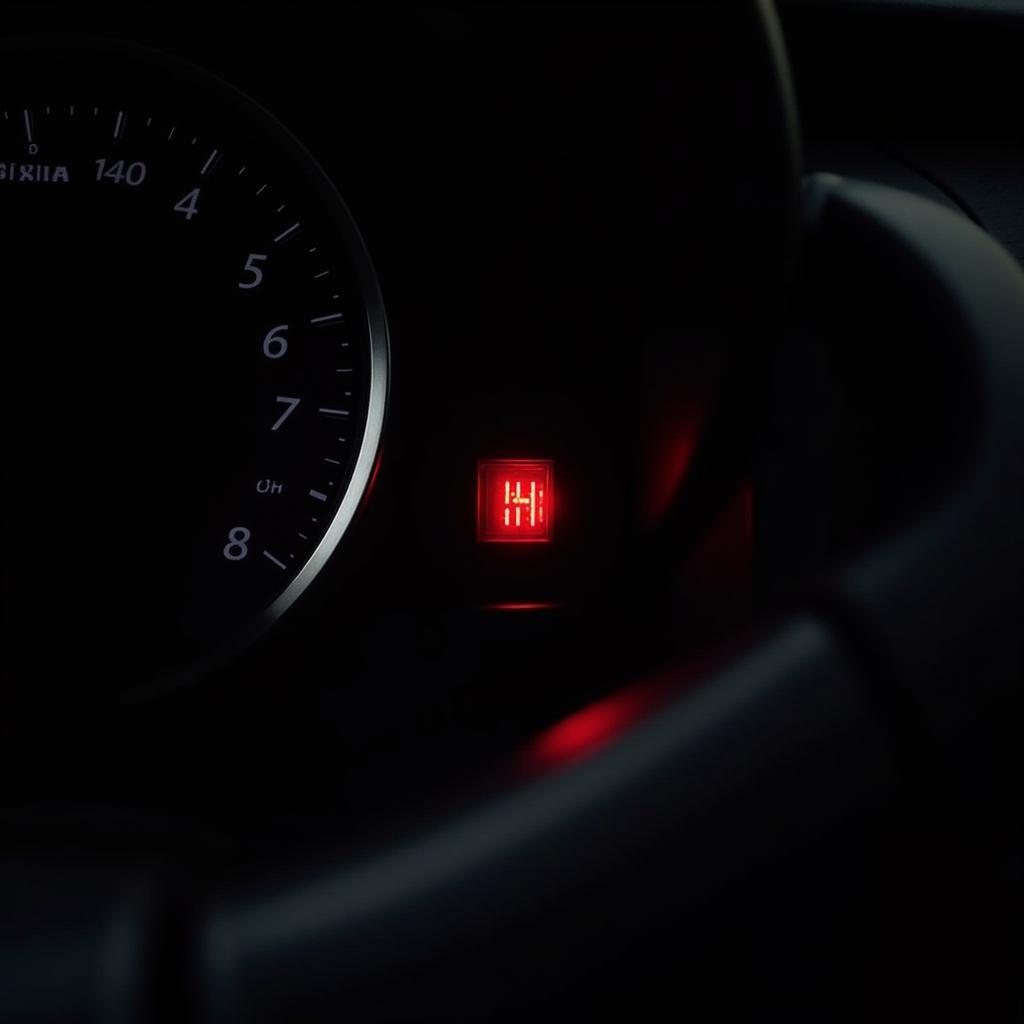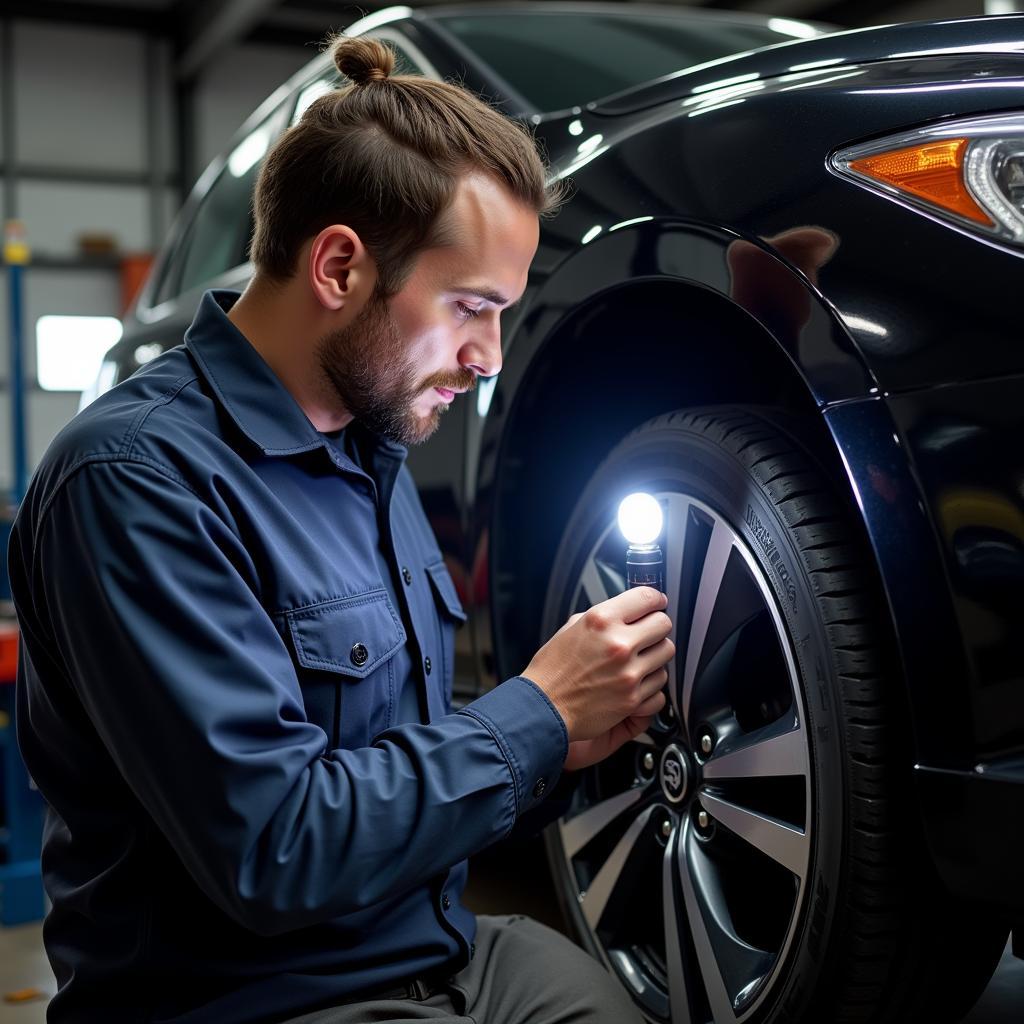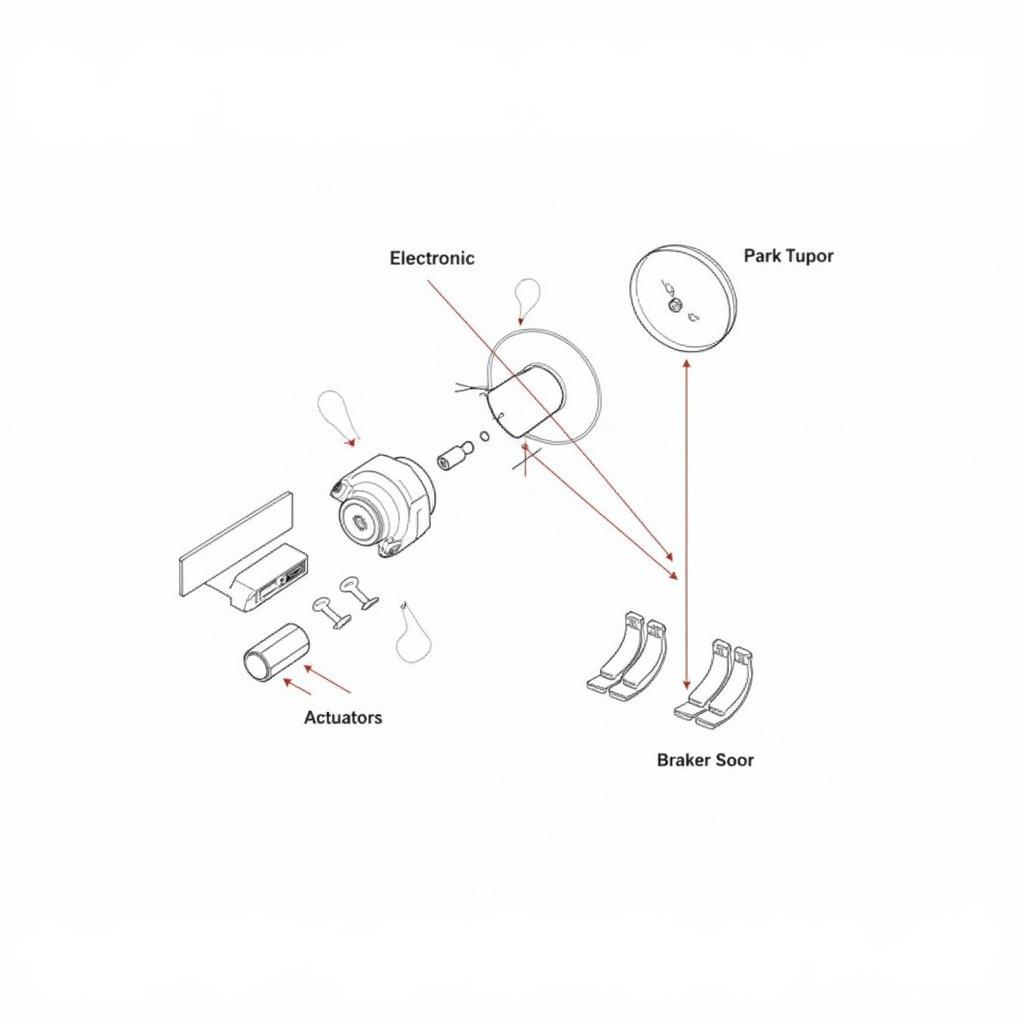The brake warning light on your Nissan Maxima dashboard is a crucial safety feature designed to alert you of potential problems within your braking system. Seeing this light illuminate while driving can be concerning, but don’t panic. This article will guide you through the common causes of a brake warning light on a Nissan Maxima and provide insights into potential solutions.
Understanding Your Nissan Maxima’s Brake Warning Light
The brake warning light typically illuminates in red or orange, signaling a potential issue with your braking system. It’s essential not to ignore this warning, as driving with compromised brakes can lead to dangerous situations.
 Nissan Maxima Brake Warning Light on Dashboard
Nissan Maxima Brake Warning Light on Dashboard
Common Causes of a Brake Warning Light on Nissan Maxima
Several factors can trigger the brake warning light on your Nissan Maxima. Here are some of the most frequent culprits:
1. Low Brake Fluid Level
One of the most common reasons for the brake warning light is a low brake fluid level. Brake fluid is the lifeblood of your braking system, transmitting force from the brake pedal to the wheels. Over time, brake fluid levels can decrease due to leaks or normal wear and tear of brake components.
Solution: Check the brake fluid level in the reservoir under the hood. If it’s low, carefully add the appropriate brake fluid type specified in your owner’s manual. If you notice a consistent need to top up brake fluid, it indicates a potential leak that requires immediate professional attention.
2. Worn Brake Pads
Brake pads are designed to wear down with use, and excessively worn brake pads can trigger the warning light. When the brake pad material wears thin, a sensor within the brake system can activate the warning light, signaling the need for replacement.
Solution: Have a mechanic inspect your brake pads to determine their condition. If the pads are excessively worn, they should be replaced promptly to ensure optimal braking performance and safety.
3. Faulty Brake Light Switch
The brake light switch, located near the brake pedal, is responsible for activating your brake lights when the pedal is pressed. A malfunctioning brake light switch can disrupt the signal to the brake warning light, causing it to illuminate.
Solution: A mechanic can diagnose a faulty brake light switch and replace it if necessary. This is generally a simple and inexpensive repair.
4. ABS System Malfunction
Modern Nissan Maximas are equipped with Anti-lock Braking Systems (ABS), which help prevent wheel lockup during hard braking. A malfunction within the ABS system can trigger the brake warning light.
Solution: If you suspect an ABS issue, it’s crucial to have your vehicle diagnosed by a qualified mechanic. Diagnosing ABS problems typically requires specialized equipment.
5. Other Potential Issues
While the causes listed above are the most common, other less frequent issues can also trigger the brake warning light. These include:
- Faulty brake caliper: A stuck caliper can prevent the brake pads from releasing properly, causing friction and potentially activating the warning light.
- Damaged brake lines: Leaks or damage to brake lines can lead to a loss of brake fluid pressure, compromising braking performance and triggering the warning light.
- Issues with the master cylinder: The master cylinder acts as the central hub of the braking system, and any malfunctions within it can affect overall braking performance.
 Mechanic Inspecting the Brake System of a Nissan Maxima
Mechanic Inspecting the Brake System of a Nissan Maxima
What to Do When Your Nissan Maxima’s Brake Warning Light Comes On
If you notice the brake warning light illuminated on your Nissan Maxima’s dashboard, follow these steps:
- Stay calm and assess the situation: Don’t panic. If possible, safely pull over to a safe location away from traffic.
- Check for obvious signs of problems: Visually inspect the brake fluid reservoir level and look for any signs of leaks or damage to the brake lines.
- Avoid driving if possible: If you suspect a serious issue, it’s best to avoid driving and have your vehicle towed to a trusted mechanic.
- Schedule an inspection: Contact a certified mechanic specializing in Nissan vehicles to diagnose and repair the issue.
Conclusion
The brake warning light on your Nissan Maxima is a critical safety indicator that should never be ignored. By understanding the common causes of this warning and taking appropriate action, you can help ensure the safety and reliability of your vehicle’s braking system. Remember, regular brake inspections and timely maintenance can help prevent many brake problems from occurring in the first place.

